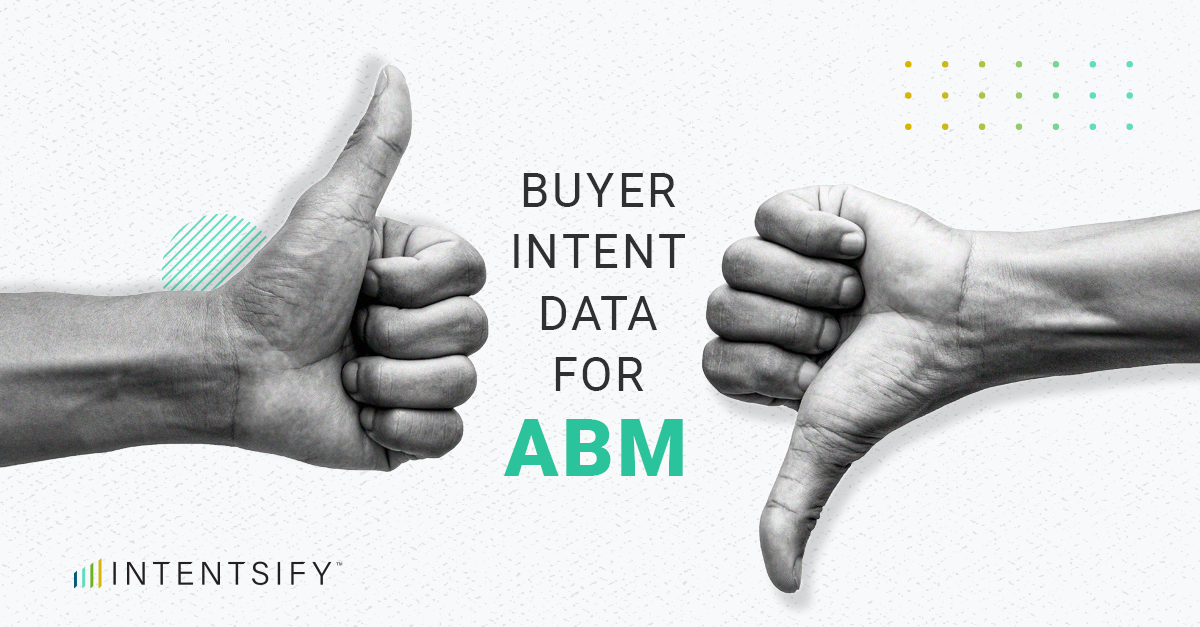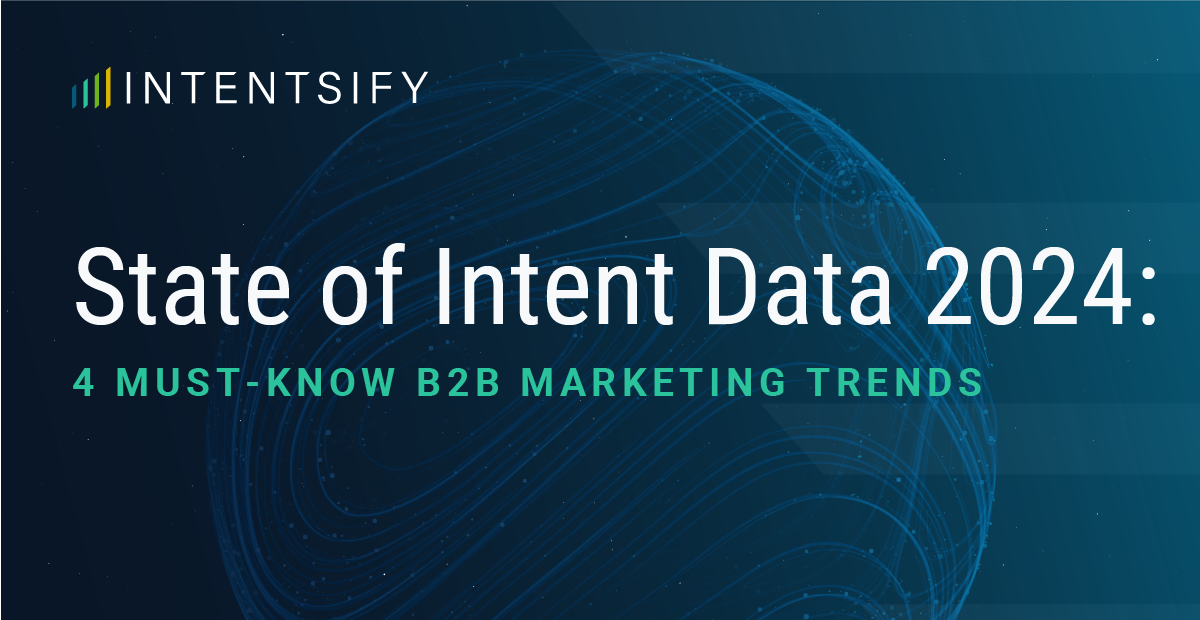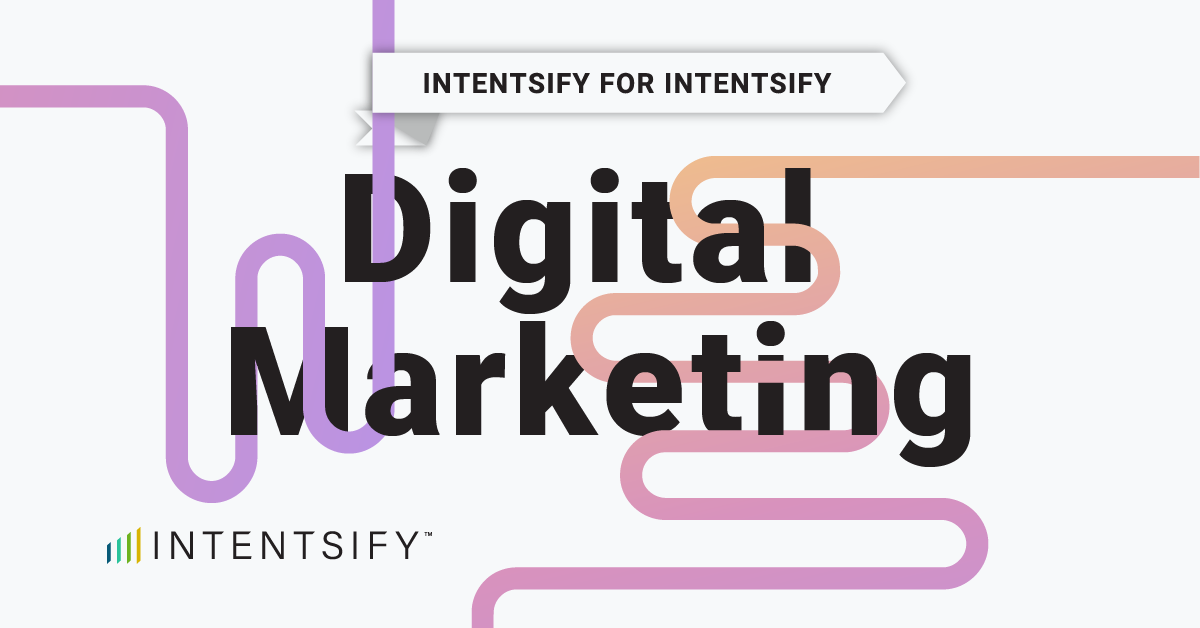The majority of midsize and large B2B organizations have piloted or launched account-based marketing (ABM) programs over the past few years—70%+ according to Gartner. Many of those organizations have also adopted buyer intent data. Why? Because buyer intent data tackles many of the challenges marketers face when embarking on an account-based strategy. While investing in intent data seems like an obvious choice when deciding to run ABM programs, understanding the drawbacks helps ensure you get the greatest return on your investment.
Intent Data Advantages
Intent data’s popularity continues to grow as traditional barriers have diminished and growth-stage companies experience the benefits. There are myriad intent data use cases across the buyer’s journey, but many complement an ABM approach and directly solve numerous challenges associated with running ABM programs. That’s why B2B marketers often invest in intent data in parallel with an account-based strategy.
Here are just some of the advantages of intent data when used alongside an ABM strategy.
Account Identification and Selection
A key component of ABM is identifying the right accounts, and one of the most impactful intent data use cases is account identification and selection. Intent data helps organizations select specific accounts to focus time and resources based on their likelihood to buy. When used effectively, intent data provides a foundation for organizations to build ABM programs that prioritize the accounts most likely to drive an organization’s pipeline and revenue goals.
Message Development & Content Creation
Gone are the days when one message fits all. Effective ABM programs must have relevant and targeted messages to “cut through the clutter.” Intent data identifies the subjects of interest for an account that can be used to personalize messages, content, websites, and even sales talk tracks. Successful organizations align all content and messages from sales and marketing on the specific challenges that target accounts are actively dealing with to increase engagement and response rates.
Account Prioritization
Sales teams are tasked with prospecting into target accounts or following up on leads with little visibility into which accounts are most valuable. Intent data helps them prioritize. Adding intent as a signal to account scoring models gives sales reps insight into which leads to follow up on first. And using intent data for sales prospecting provides reps with insight into how to prioritize target accounts for those most interested and more likely to engage.
Revenue Team Alignment
It’s no secret that alignment among sales, marketing, and customer success teams is critical for ABM success. And each group has its own ideas on the best way to identify high-priority accounts, and with which messages and tactics. Buyer intent can be a data-driven method for unifying and increasing efficiency among revenue teams. With use cases that support the entire buyer and customer journey, intent data provides a foundation for organizing teams; it helps them align on a target list of accounts, provides insight into an account’s subjects of interest for messaging and content creation, and prioritizes sales and customer success resources on the highest-likelihood accounts or greatest churn risks.
Intent Data Drawbacks
Intent data can be an incredibly impactful tool for ABM. But it requires planning and a clear strategy. Before investing in intent data, it’s important to keep the drawbacks in mind to avoid unexpected roadblocks or difficulty validating success.
Limiting Intent Data’s Use
Intent data has become a critical tool for many organizations. But it’s also easy to underutilize intent data if you don’t effectively implement it, interpret the resulting insights, and put those insights into action. From limiting its use to top-of-funnel use cases to acting too slowly on the intent signals, organizations must plan and prepare to use in their ABM efforts to get the full value of their investment.
Lack of Baseline Performance Metrics
Measurement of intent data-driven outcomes is a top challenge among B2B marketers. But setting baseline performance metrics prior to implementing ABM or intent data is important for identifying what’s working and what’s not. To measure the efficacy of your intent-driven initiatives, first look at your pre-intent performance and document baseline metrics for all existing programs you currently have running. Next, define key performance indicators (KPIs) and metrics to track for each intent data use case. By benchmarking pre- and post-ABM and intent data-driven performance, you’ll be better able to quantify the value of your program investments.
Limiting to a Single Intent Data Source
No one source of intent data can cover all the online research activities of an entire target audience. Reaping the full benefits of intent data for ABM requires aggregating multiple sources to verify the strongest intent signals. When leveraging multiple sources, it’s easier to remove outlier signals and focus your ABM resources on the strongest buyer intent signals.
Slow to Act on Intent Insights
Intent data has a shelf life. Waiting weeks to act on accounts with strong intent may mean the difference between generating an opportunity or losing one to a competitor. Most intent data vendors refresh their data frequently (typically weekly) to deliver the freshest information on the research activity of your target accounts. B2B organizations must prepare their marketing and sales resources to be ready to act in a timely fashion to ensure the greatest possible outcomes.
Intent data and ABM success requires an organizational shift in traditional lead generation mindsets. When used effectively, organizations achieve exponential results. But without preparation, it’s easy to miss out on the full value of ABM and your intent data investment.
If you’re considering or have already launched ABM programs at your organization, these tips can help ensure you set your teams up for success.






